I. Seeds and field selection
The selection of hybrid millet seeds depends on factors like local climate, topography, soil type and cultivation system. For example, cultivars resistant to drought are planted in dry areas; those with high yield potential but require more water and fertilizer are planted in areas with fertile soils.
Because of their small seed size, millets risk exhausting their energy reserves to emerge from the soil surface if planted too deep. Therefore, it's recommended to choose lands with soft and loose fertile sandy loam soil that has good drainage and infiltration of water and air, easy to work, and far from termites.
II. Land preparation
Standards for land preparation require the planting soil to be flat with uniformly fine texture, without large residue or stubble, provide great aeration that allows water and air to reach plant roots, soft on the top layer, hard and packed at the bottom layer. Tillage normally starts after one or two good rains at the beginning of the rainy season. Several rounds of tillage could be applied to remove weeds if it takes a while before sowing. Tillage should be scheduled at a proper time — the land is too dry to be ploughed if tilled early, or too wet that it would stick on ploughs, so the right timing is when the soil is neither too wet nor too dry.
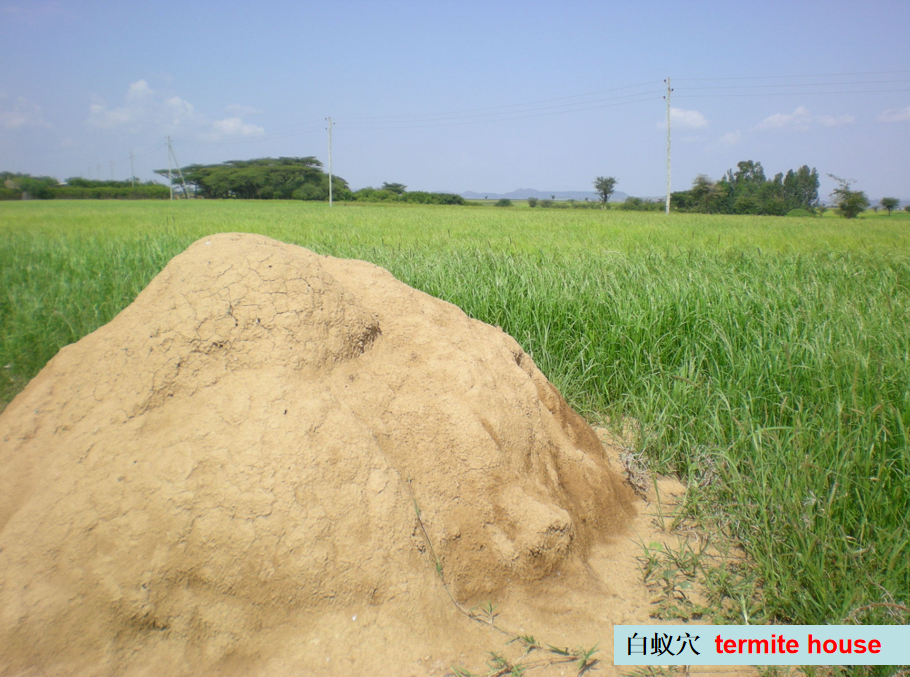
Termite house/ nest/ home
III. Fertilizer application
(1) Fertilizer application: farmyard manure is the main base fertilizer. Its application rate should be 75,000 to 1125,000kg/ha for highly productive lands; 22,500 to 60,000kg/ha for medium-yield fields. To increase the content of available nutrients, a fertilizer that contains nitrogen, phosphorus and potassium is needed. for example, it's recommended to mix 150kg of Diammonia Phosphate (DAP) per ha with farmyard manure. If no farmyard manure is available, 150kg/ha of DAP could be applied when sowing seeds.
(2) Additional fertilizer application: hybrid millets grow rapidly and have strong roots, so they can absorb water and fertilizer efficiently. Two additional application of fertilizer is recommended for cultivars with short growth period and three applications for high-yield plots.
The first time to add fertilizer is when millet seedlings reach 5 to 6 leave stage. Apply 75kg of urea per ha along the rows, then bury the urea into soil during hoeing, and thinning of seedlings.
The second time to add fertilizer is during the elongation stage (the height of the seedling is about 30cm). Spread 150kg of urea per ha with the same method mentioned above.
The third time to add fertilizer is during the booting stage. Apply 75kg of urea per ha when it rains or irrigate after application.
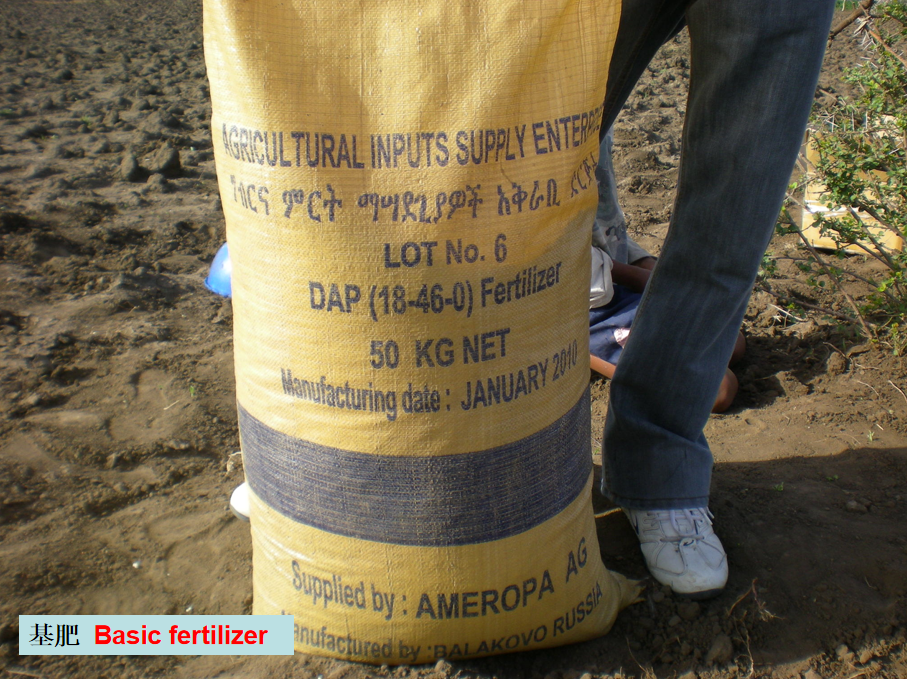
Basic fertilizer or base fertilizer
IV. Sowing seeds
(1) Sow seeds at the right time: the sowing date of hybrid millets depends on two main factors which are the length of the local rainy season and the growth period of chosen hybrid millet variety. That is to say, the end date of the normal local long rainy season minus the growth period of chosen hybrid millet variety is its sowing date. Sow seeds early in areas whose rainy season is short and vice versa; sow seeds late for varieties with short growth periods and vice versa.
(2) Seeding rate and depth: seeding rate is calculated by desired plant population, germination rate, true hybrid rate and thousand seed weight, and the general rate is 7.5 to 11.25kg/ha. The principle is to sow seeds shallow if the soil moisture content is high and vice versa, and the general ideal seeding depth is 1 to 2cm.
(3) Row spacing control: millet should be planted in rows about 25cm apart. It’s important to keep in mind that the wider the row spacing is, the deeper the seeding depth becomes, which is not good for seed germination. This is one of the widely used sowing methods in the African continent now.
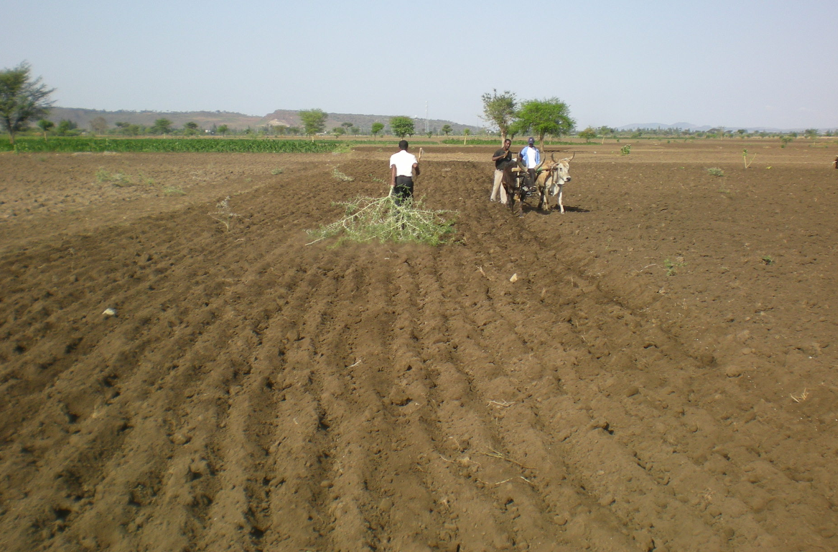
Appropriate spacing for millet rows
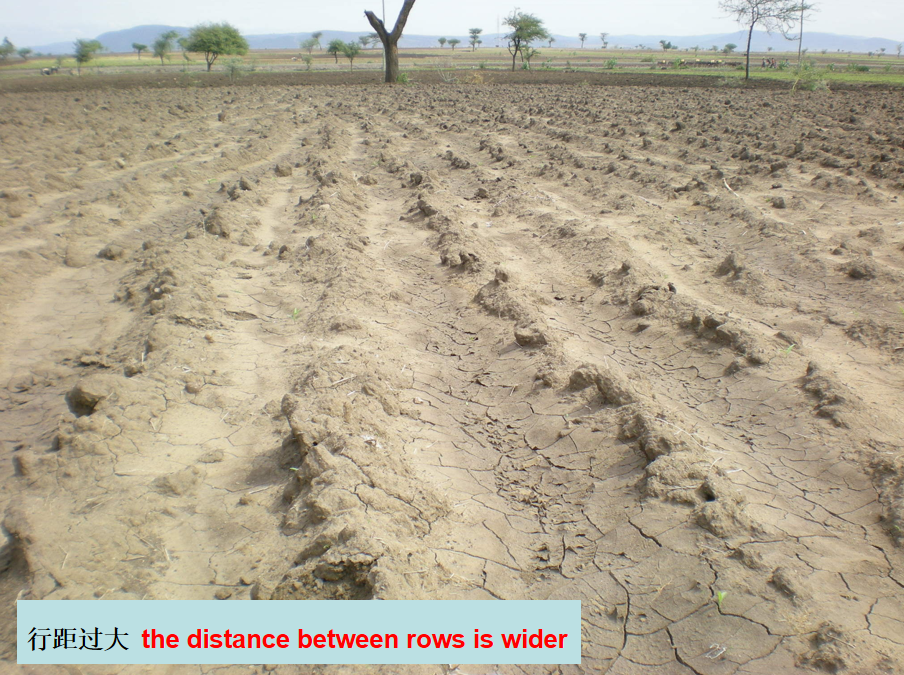
The row-to-row distance for millet is too wide.
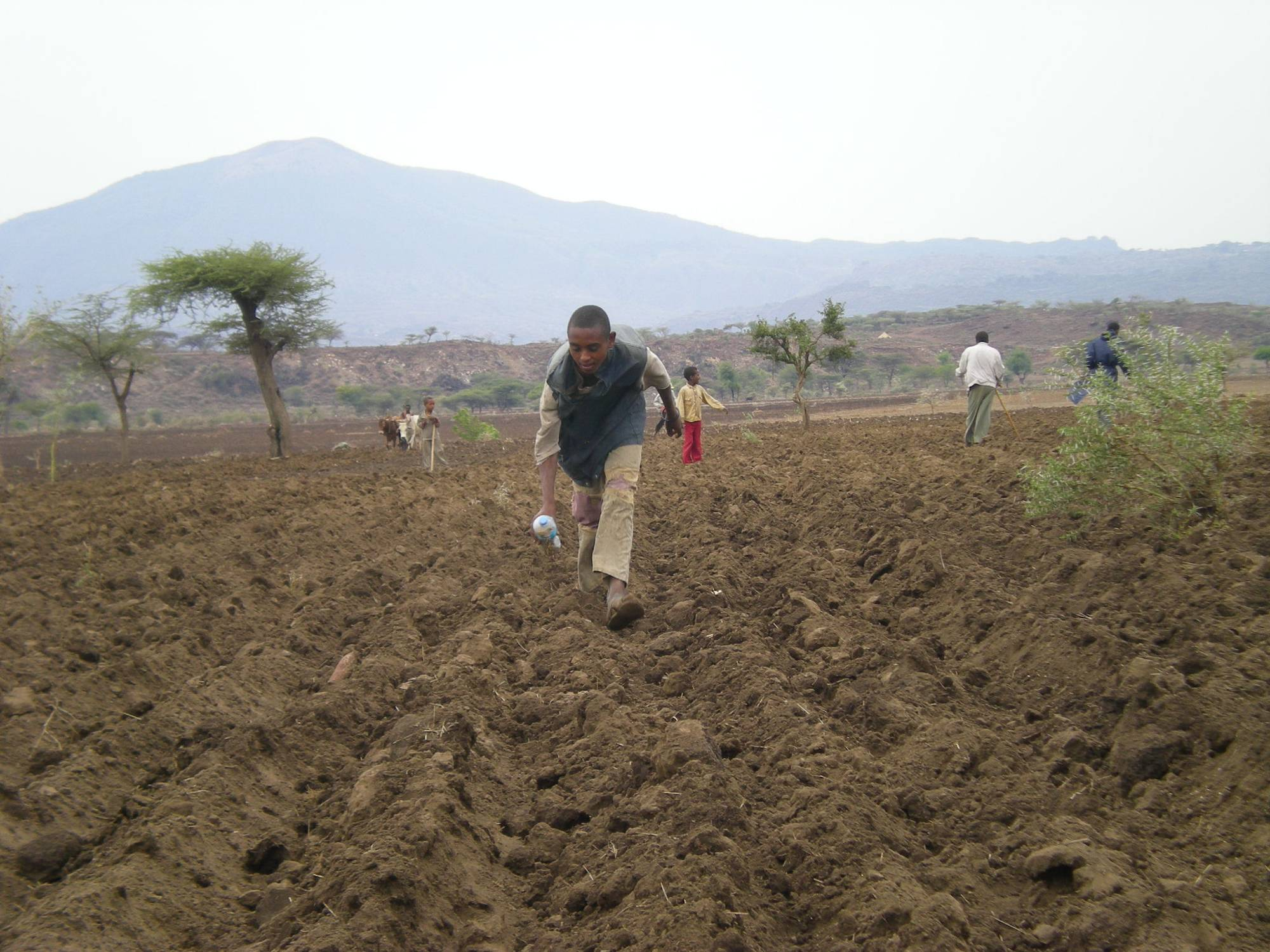
Sowing
(4) Covering seeds: whether to cover seeds after sowing depends on soil and climate conditions. There is no need to cover seeds in areas with loose soils and a good rain one or two days after sowing, as the seeds would be covered naturally; otherwise cover the seeds immediately after sowing, so that to reduce moisture loss and help seeds to germinate.
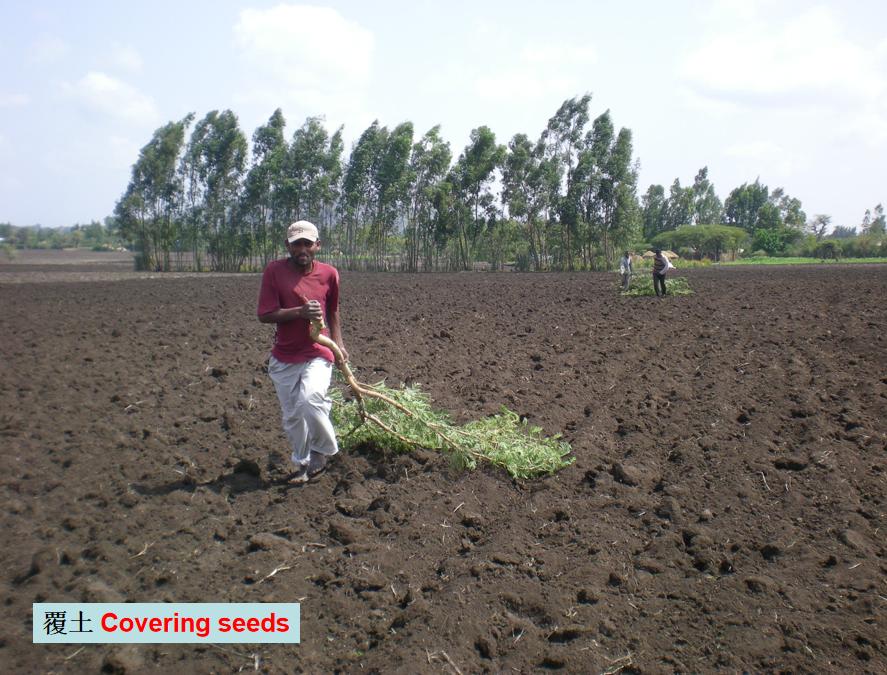
Covering seeds
V. Management in the whole stages
(1) Thinning: seedlings should be about 4cm tall and have 3 to 4 true leaves before thinning and the seedlings should be thinned to the required density according to each cultivar's respective characteristics at one time. The recommended spacings between plants is about 15cm in dry lands and about 10cm in irrigated and fertile plots. The suitable plant population is 225,000 to 300,000 seedlings/ha for dry lands and 375,000 to 450,000 seedlings/ha for irrigated lands. Within this range, the principle is that denser population is suitable for fertile lands, less population is needed for degraded lands, more population is needed for early maturing varieties, and less population is needed for late maturing varieties.
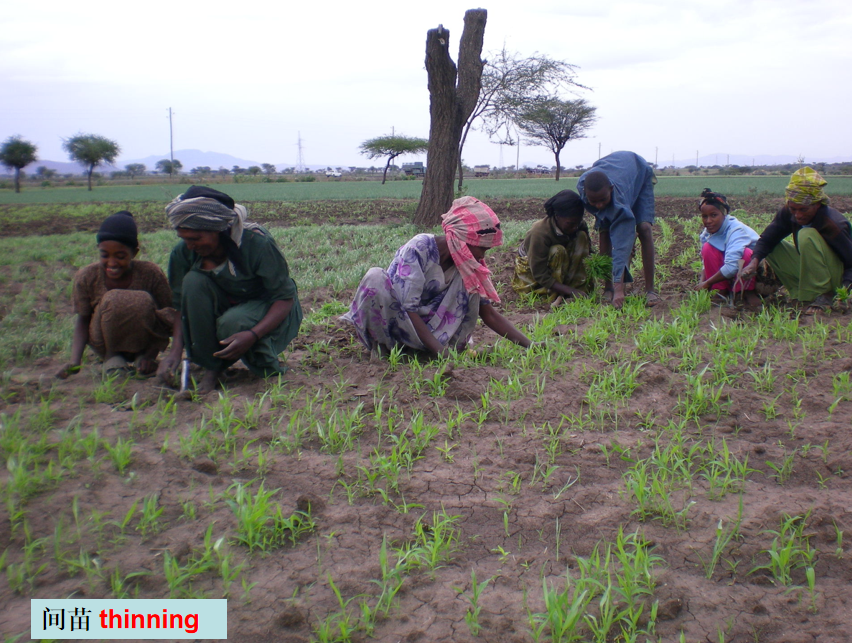
Thinning seedlings
(2) Pest management and bird control: Spray pesticide to deal with pests and plant diseases. Observe the millet field carefully during the seedling stage and after thinning. Spray pest control chemicals if finds any signs of pest damage, special attention should be paid to aphids in plots nearby vegetable fields like onions. In case of termites, apply fertilizer earlier and constant hoeing can reduce the damage.
Many measures can be taken to keep birds away such as hanging of bird repellents, placing of scarecrows, and driving them away manually when they are most likely to harm the crop.
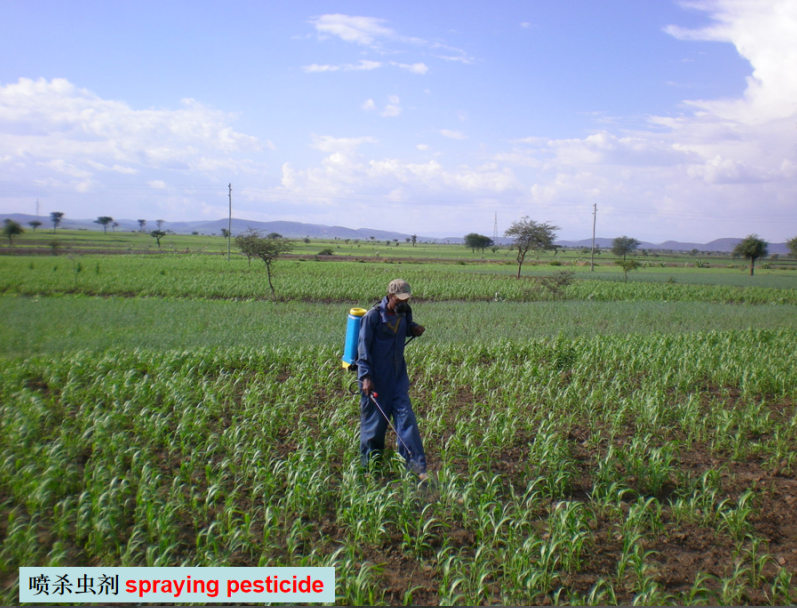
Spraying pesticide
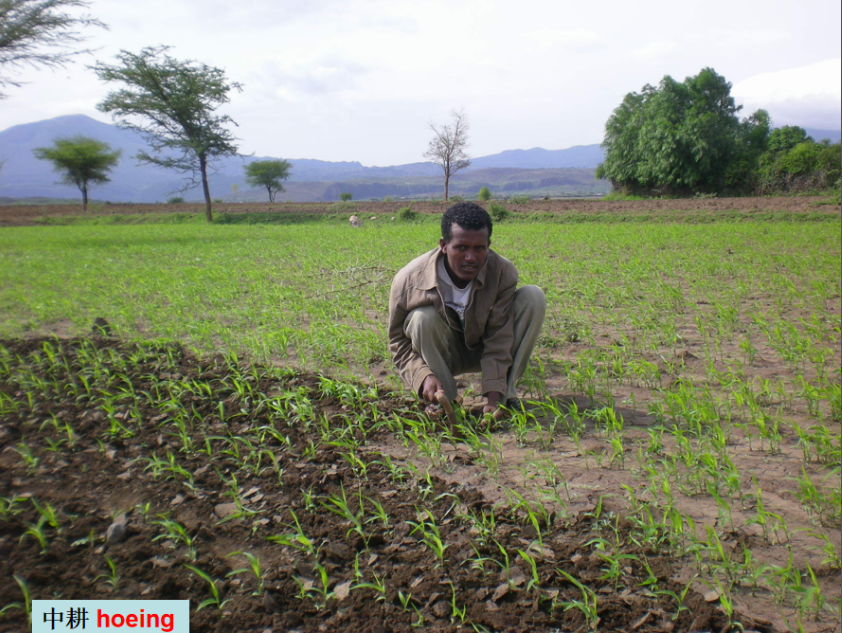
Hoeing
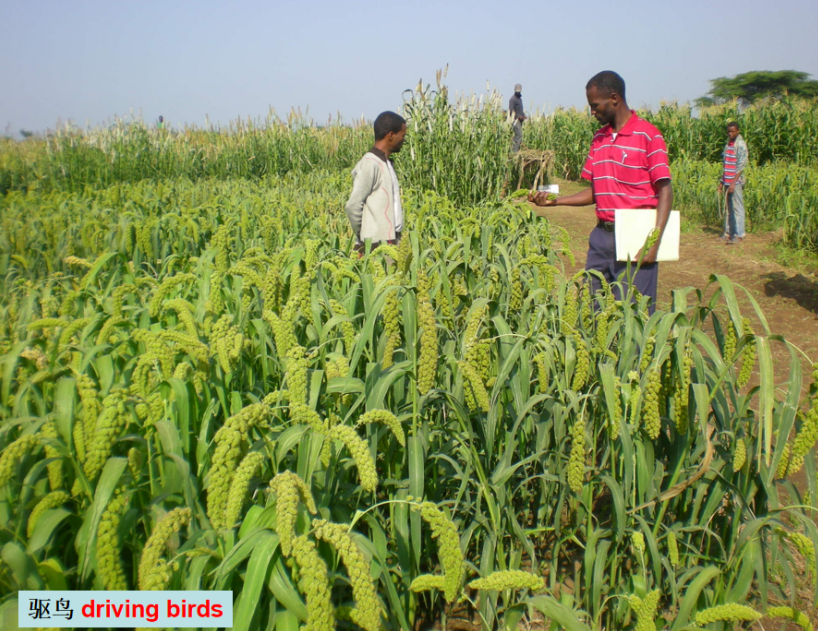
Driving birds away
VI. Harvesting
The crop is ready to harvest is when their seed heads have turned from green to golden brownand have hard kernels. Millet can be harvested either by hand or with machines. Manual harvesting requires farmers to cut the crop from the bottom with sickles first, then remove the ear heads from the stalks, then dry the heads, and then thresh the heads to get the grain. It is very convenient to dry the harvested ear heads in most African countries, because of the good sunshine after the rainy season. Threshing can be accomplished by methods like beating the seed heads manually with sticks, treading under animal feet, or by using a variety of machines. Finally, store the threshed grain in a cool place.
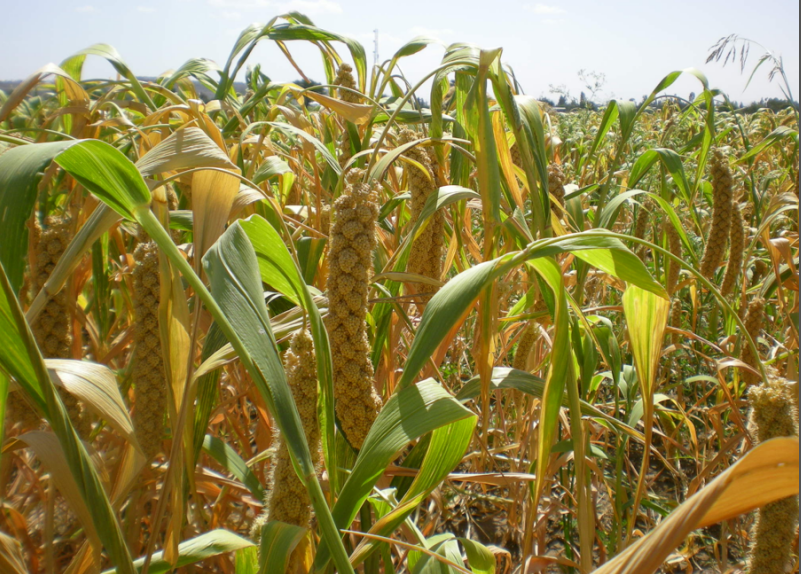
Millets ready to be harvested
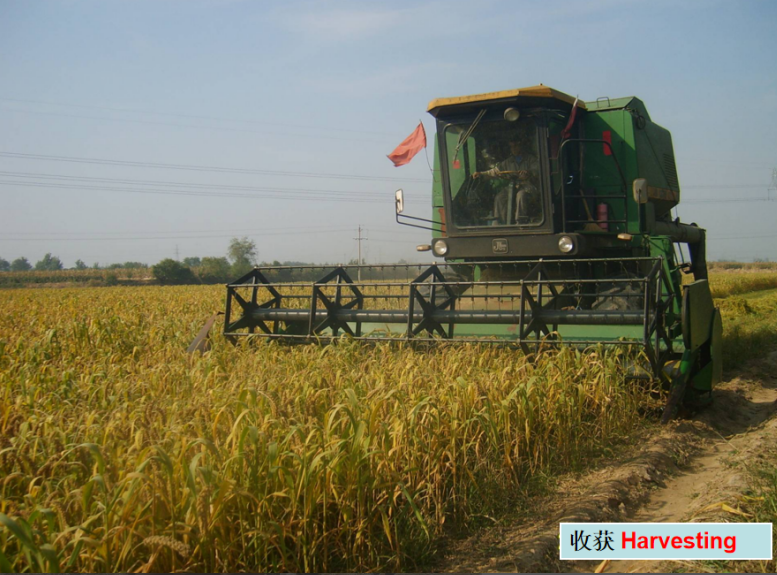
Mechanical harvesting
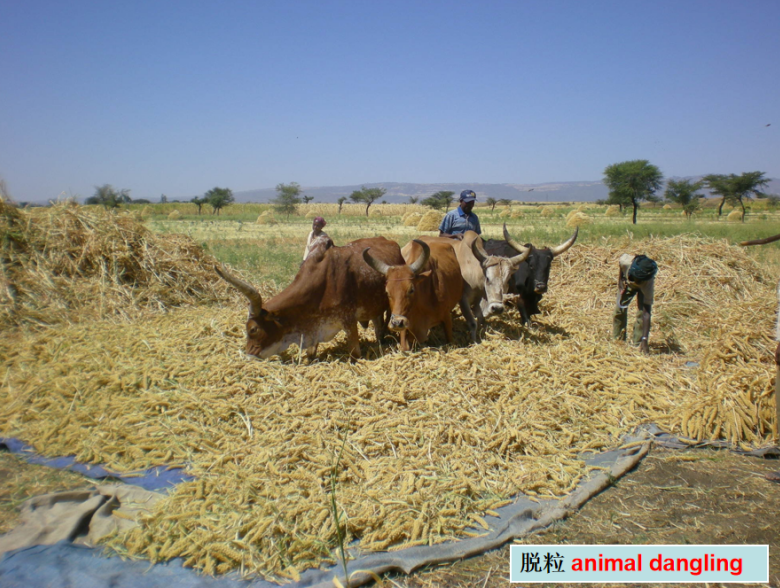
Threshing by treading under animal feet

For more information, please contact WFP China COE (wfpcn.coe@wfp.org)
Category
"Zhangzagu" Hybrid Millet Cultivation Techniques in Africa
Contributor
"Zhangzagu" Hybrid Millet Cultivation Techniques in Africa
Country
Technical Solution

